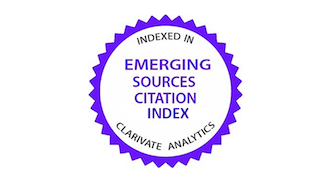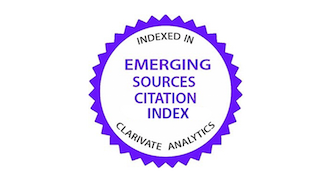Chemical and sensory attributes of meat from chickens fed Roystonea regia nuts
DOI:
https://doi.org/10.15517/am.2025.63242Keywords:
meat quality, royal palm, broiler chickensAbstract
Introduction. Previous studies related to the inclusion of palmiche flour, nuts of the royal palm (Roystonea regia), in the diet of broiler chickens showed improvements in quality indicators related to lipid composition in thighs, legs, breasts, and abdominal fat. Objective. To assess the impact of palmiche flour consumption on the chemical and sensory attributes of broiler chicken meat. Materials and methods. The study was conducted over 35 days at the Institute of Animal Science, Mayabeque, Cuba, between February and March 2023, using forty 8-day-old male broilers. Experimental treatments comprised a control group and three inclusion levels of 5, 10, and 15 % of palmiche flour. Moisture and ash content were analyzed in thighs and breasts. Qualitative analysis of color, smell, flavor, dryness, hardness, and juiciness was performed in the control and 15 % inclusion treatments. Overall quality was
assessed quantitatively. Results. Moisture increased in the treatments with 5 and 10 % inclusion compared to control
and 15 % treatments, which showed no significant differences (69.92 and 70.45 vs. 65.70 and 65.71 %, respectively). Flavor intensity and overall quality in thighs and breasts improved by including 15 % of palmiche flour. Conclusions. While the consumption of 15 % of palmiche flour did not affect the chemical attributes of the meat, it improved sensory characteristics, particularly flavor, and overall quality of broiler thighs and breasts meat.
Downloads
References
Ajantha, A., Senthilkumar, S., Sakthivael, P. C., & Purushothaman, M. R. (2017). Nutritional influence on quality of egg and meat in poultry – a review. International Journal of Science, Environment and Technology, 6(6), 3338–3345. http://ijset.net/journal/1968.pdf
Amaral, A. B., Da Silva, M. V., & Da Silva Lannes, S. C. (2018). Lipid oxidation in meat: mechanisms and protective factors – a review. Food Science and Technology, Campinas, 38(Suppl.1), 1–15. https://doi.org/10.1590/fst.32518
Arrutia, F., Binner, E., Williams, P., & Waldron, K. W. (2020). Oilseeds beyond oil: press cakes and meals supplying global protein requirements. Trends in Food Science & Technology, 100, 88–102. https://doi.org/10.1016/j.tifs.2020.03.044
Báez Quiñones, N., Martínez-Pérez, M., Rodríguez Sánchez, B., Cobo-Cuña, R., & Pérez-Acosta, O. (2023). Análisis económico del uso de harina de palmiche en la alimentación de pollos de engorde. Ciencia y Tecnología Agropecuaria, 24(3), Artículo e3274. https://doi.org/10.21930/rcta.vol24_num3_art:3274
Baéza, E., Guillier, L., & Petracci, M. (2022). Review: Production factors affecting poultry carcass and meat quality attributes. Animal, 16(Suppl. 1), Article 100331. https://doi.org/10.1016/j.animal.2021.100331
Choi, J., Kong, B., Bowker, B.C., Zhuang, H., & Kim, W.K. (2023). Nutritional strategies to improve meat quality and composition in the challenging conditions of broiler production: a review. Animals, 13(8), Article 1386. https://doi.org/10.3390/ani13081386
Fakolade, P. O. (2015). Effect of age on physico-chemical, cholesterol and proximate composition of chicken and quail meat. African Journal of Food Science, 9(4), 182–186. https://doi.org/10.5897/AJFS2015.1282
Frank, D., Ball, A., Hughes, J., Piyasiri, U., Stark, J., Watkins, P., & Warner, R. (2016). Sensory and flavor chemistry characteristics of Australian beef: influence of intramuscular fat, feed, and breed. Journal of Agricultural and Food Chemistry, 64(21), 4299–4311. https://doi.org/10.1021/acs.jafc.6b00160
Kramer, C. Y. (1956). Extension of multiple range tests to group means with unequal numbers of replications. Biometrics, 12(3), 307–310.
Küçüközet, A. O., & Uslu, M. K. (2018). Cooking loss, tenderness, and sensory evaluation of chicken meat roasted after wrapping with edible films. Food Science and Technology International, 24(7), 576–584. https://doi.org/10.1177/1082013218776540
Levene, H. (Ed.). (1960). Robust tests for the equality of variance. Contributions to Probability and Statistics. Stanford Univesity Press.
Lilliefors, H. W. (1967). On the Kolmogorov-Smirnov test for normality with mean and variance unknown. Journal of American Statistical Association, 62(318), 399–402. https://doi.org/10.1080/01621459.1967.10482916
Marrero Delange, D., Morales Rico, C. L., Rodríguez Leyes, E. A., & González Canavaciolo, V. (2013). Determination of sterol and fatty alcohols in unsaponifiable matter of Roystonea regia fruits oil. Journal of Medicinal Plants Research, 7(37), 2736–2740. https://academicjournals.org/journal/JMPR/article-full-text-pdf/5BFB82123966
Martínez-Pérez, M., Vives Hernández, Y., Rodríguez, B., Pérez Acosta, O. G., & Herrera Villafranca, M. (2021). Nutritional value of palm kernel meal, fruit of the royal palm tree (Roystonea regia), for feeding broilers. Cuban Journal of Agricultural Science, 55(3), 305–313. https://cjascience.com/index.php/CJAS/article/view/1026/1339
Martínez-Pérez, M., Vives-Hernández, Y., Rodríguez-Sánchez, B., & Pérez-Acosta, O. G. (2021). Calidad de la canal y la carne en pollos de ceba que consumen Roystonea regia. Revista MVZ Córdoba, 26(2), Artículo e1984. https://doi.org/10.21897/rmvz.1984
Oficina Nacional de Normalización. (2002). Norma cubana ISO 2171. Cereales y productos de cereales molidos. Determinación de cenizas totales. Oficina Nacional de Normalización.
Oficina Nacional de Normalización. (2003). Norma cubana 275. Carne y productos cárnicos. Determinación del contenido de humedad: método rápido. Oficina Nacional de Normalización.
Oficina Nacional de Normalización. (2006). Norma cubana ISO 4121. Análisis sensorial. Directrices para la utilización de escalas de respuestas cuantitativas. Oficina Nacional de Normalización.
Okeudo, N. J., Eboh, K. V., Izugboekwe, N. V., & Akanno, E. C. (2005). Growth rate, carcass characteristics and organoleptic quality of broiler fed graded levels of palm kernel cake. International Journal of Poultry Science, 4(5), 330–333. https://doi.org/10.3923/ijps.2005.330.333
Parmar, A. B., Patel, V. R., Usadadia, S. V., Chaudhary, L. M., Prajapati, D. R., & Londhe, A. S. (2019). Influence of dietary inclusion of oil and quercetin supplementation on carcass characters and meat quality attributes of broiler chickens. International Journal of Livestock Research, 9(9), 93–103. https://ijlr.org/ojs_journal/index.php/ijlr/article/view/1116
Puvača, N., Tufarelli, V., & Giannenas, I. (2022). Essential oils in broiler chicken production, immunity and meat quality: review of Thymus vulgaris, Origanum vulgare, and Rosmarinus officinalis. Agriculture, 12(6), Article 874. https://doi.org/10.3390/agriculture12060874
Rodríguez, B., Martínez-Pérez, M., Vives, Y., Ayala, L., & Pérez, O. (2020). Evaluación de la harina de frutos de Roystonea regia para la alimentación de pollos de engorde. Livestock Research for Rural Development, 32(7), Artículo 118. http://www.lrrd.org/lrrd32/7/brodri32118.html
Rubayet Bostami, A. B. M., Khan, M. R. I., Selim, A. S. M., Hossain, M. D., & Khairunnesa, M. (2022). Physico-chemical parameters and sensory attributes of different chicken meat of consumer’s choice from poultry market. Meat Research, 2(2), Article 16. https://doi.org/10.55002/mr.2.2.16
Schumacher, M., DelCurto-Wyffels, H., Thomson, J., & Boles, J. (2022). Fat deposition and fat effects on meat quality—A review. Animals, 12(12), Article 1550. https://doi.org/10.3390/ani12121550
Suliman, G. M., Alowaimer, A. N., Al-Mufarrej, S. I., Hussein, E. O. S., Fazea, E. H., Naiel, M. A. E., Alhotan, R. A., & Swelum, A. A. (2021). The effects of clove seed (Syzygium aromaticum) dietary administration on carcass characteristics, meat quality, and sensory attributes of broiler chickens. Poultry Science, 100(3), Article 100904. https://doi.org/10.1016/j.psj.2020.12.009
Teye, M., Apori, S. O., & Ayeida, A. A. (2015). Carcass parameters and sensory characteristics of broiler chicken fed diets containing palm (Elaeis guineensis) kernel oil residue. International Journal of Current Microbiology and Applied Sciences, 4(6), 1030–1038. https://www.ijcmas.com/vol-4-6/M.%20Teye,%20et%20al.pdf
Toomer, O. T., Livingston, M., Wall, B., Sanders, E., Vu, T., Malheiros, R. D., Livingston, K. A., Carvalho, L. V., Ferket, P. R., & Lisa, L. L. (2020). Feeding high-oleic peanuts to meat-type broiler chickens enhances the fatty acid profile of the meat produced. Poultry Science, 99(4), 2236–2245. https://doi.org/10.1016/j.psj.2019.11.015
United States Department of Agriculture. (2022, January). Oilseeds: world markets and trade. https://downloads.usda.library.cornell.edu/usda-esmis/files/tx31qh68h/k06999499/gm80jz36g/oilseeds.pdf
Varona Sánchez, E. (2021). Utilización de los aceites ácidos y ácidos grasos destilados en alimentación animal: caracterización de estos subproductos y repercusiones de su uso en la estabilidad oxidativa de piensos y carne de pollo [Tesis doctoral, Universidad de Barcelona]. Repositorio Digital de la Universidad de Barcelona. https://hdl.handle.net/2445/185570
Vives, Y., Martínez-Pérez, M., Alberto, M., & Hernández, Y. (2020). Pancreatic lipase enzymatic activity in broilers fed with Roystonea regia fruit meal included in the ration. Technical note. Cuban Journal of Agricultural Science, 54(1), 101–105. http://www.cjascience.com/index.php/CJAS/article/view/940
Yadav, S., Teng, P.-Y., Choi, J., Singh, A. K., & Kim, W. K. (2022). Nutrient profile and effects of carinata meal as alternative feed ingredient on broiler performance, tight junction gene expression and intestinal morphology. Poultry Science, 101(2), Article 101411. https://doi.org/10.1016/j.psj.2021.101411
Yang, E. J., Seo, Y. S., Dilawar, M. A., Mun, H. S., Park, H. S., & Yang, C. J. (2020). Physico-chemical attributes, sensory evaluation and oxidative stability of leg meat from broilers supplemented with plant extracts. Journal of Animal Science and Technology, 62(5), 730–740. https://doi.org/10.5187/jast.2020.62.5.730

Additional Files
Published
License
Copyright (c) 2025 Medeleidy Martínez-Pérez, Ivania Rodríguez-Álvarez, Lázara Ayala-González, Yoleisy García-Hernández, Magalys Herrera-Villafranca (Autor/a)

This work is licensed under a Creative Commons Attribution-NonCommercial-NoDerivatives 4.0 International License.
1. Proposed policy for open access journals
Authors who publish in this journal accept the following conditions:
a. Authors retain the copyright and assign to the journal the right to the first publication, with the work registered under the attribution, non-commercial and no-derivative license from Creative Commons, which allows third parties to use what has been published as long as they mention the authorship of the work and upon first publication in this journal, the work may not be used for commercial purposes and the publications may not be used to remix, transform or create another work.
b. Authors may enter into additional independent contractual arrangements for the non-exclusive distribution of the version of the article published in this journal (e.g., including it in an institutional repository or publishing it in a book) provided that they clearly indicate that the work was first published in this journal.
c. Authors are permitted and encouraged to publish their work on the Internet (e.g. on institutional or personal pages) before and during the review and publication process, as it may lead to productive exchanges and faster and wider dissemination of published work (see The Effect of Open Access).






























